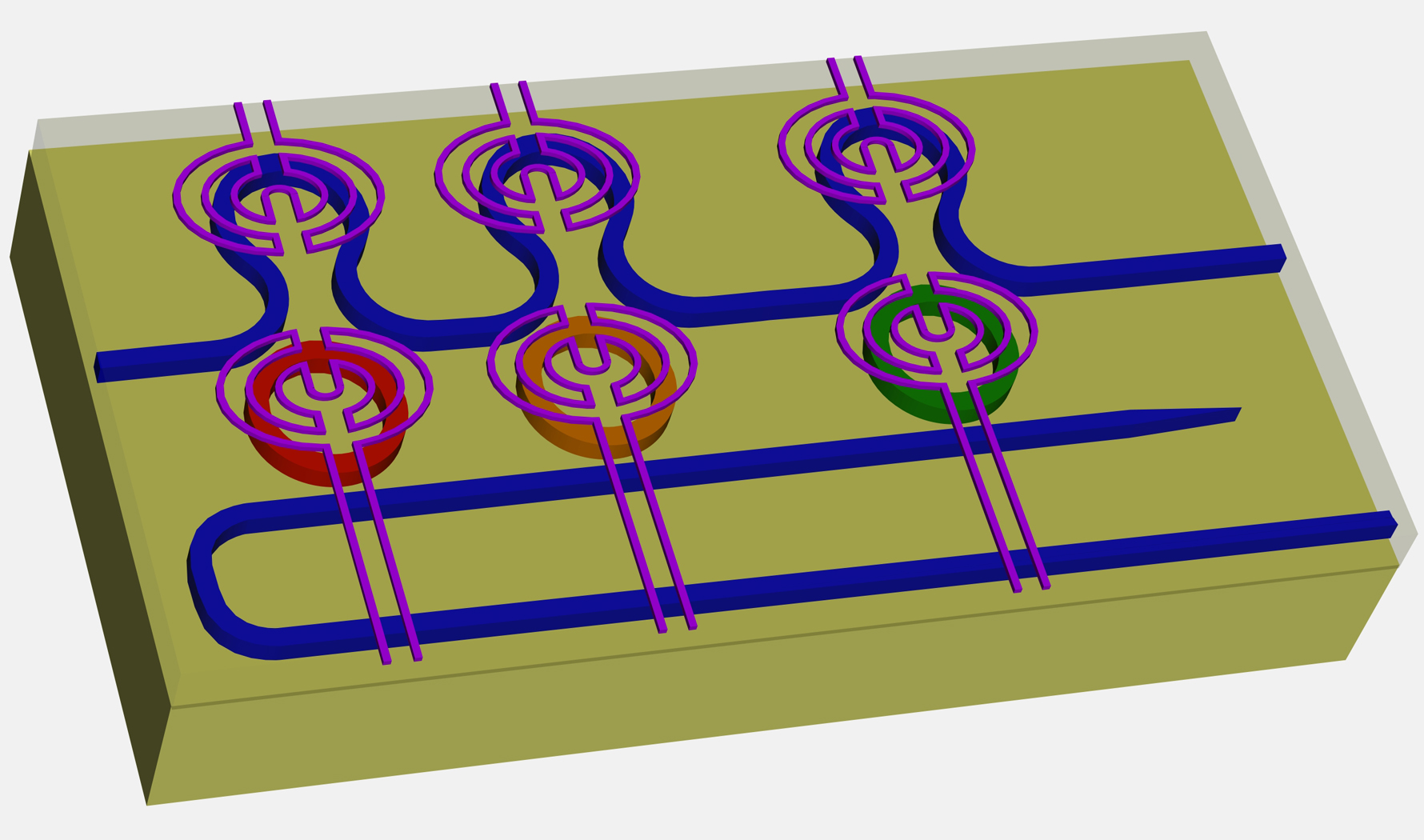'Microring' wireless devices could nix wires in homes, offices

Wire clutter at work and at home may soon be a thing of the past. Purdue University researchers have developed a system capable of converting ultra fast laser pulses into bursts of radio-frequency signals using "microring resonators." The technology could apply to high-definition television broadcasts, Internet connections and even for transmitting wireless signals inside cars.
These microring resonators are tiny silicon devices consisting of a radio transmitter, just 10 microns (one millionth of a meter) in length, crafted into a solid-state device. A series of the microrings were combined in a programmable "spectral shaper" 100 microns wide, or about the width of a human hair.The tiny circuits are activated by 100 femtosecond (100 quadrillionths of second) bursts of light from diode lasers.
The laser pulses are created using specific "shapes" that characterize the changing intensity of light from the beginning to end of each pulse. The process uses optical arbitrary waveform technology, a technique pioneered by Purdue researchers in 2005. The pulses excite the microring into emitting precisely-controlled radio waves. The microring filter can be tuned by heating the rings which causes them to change so that they filter different frequencies.
Minghao Qi, an assistant professor of electrical and computer engineering at Purdue, said; "Of course, ideas about specific uses of our technology are futuristic and speculative, but we envision a single base station and everything else would be wireless. This base station would be sort of a computer by itself, perhaps a card inserted into one of the expansion slots in a central computer. The central computer would take charge of all the information processing, a single point of contact that interacts with the external world in receiving and sending information."
According to Qi and his team of boffins, ordinarily, the continuous waves of conventional radio-frequency transmissions encounter interference from stray signals reflecting off of the walls and objects inside a house or office. The pulsing nature of the signals produced by the new "chip-based spectral shaper" however, reduces the interference that normally plagues radio frequency communications.
Another advantage for the wireless technology is that the pulses transmit radio frequencies of up to 60 gigahertz, a frequency included in the window of the radio spectrum that is unlicensed and not reserved for military communication.
Sill, the technology is still many years away from commercialization as it would need better power efficiency and smaller parts for the system.
Findings have appeared online in the journal Nature Photonics and the research is based at Purdue's Birck Nanotechnology Center.
